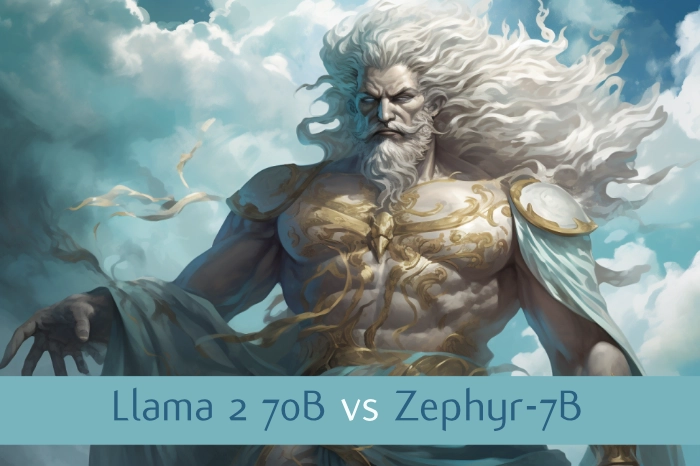A new language model known as Zephyr has been created. The Zephyr-7B-α large language model, has been designed to function as helpful assistants, providing a new level of interaction and utility in the realm of AI. This Llama 2 70B vs Zephyr-7B overview guide and comparison video will provide more information on the development and performance of Zephyr-7B. Exploring its training process, the use of Direct Preference Optimization (DPO) for alignment, and its performance in comparison to other models. In Greek mythology, Zephyr or Zephyrus is the god of the west wind, often depicted as a gentle breeze bringing in the spring season.
Zephyr-7B-α, the first model in the Zephyr series, is a fine-tuned version of Mistral-7B-v0.1. The model was trained on a mix of publicly available, synthetic datasets using Direct Preference Optimization (DPO), a technique that has proven to be effective in enhancing the performance of language models. Interestingly, the developers found that removing the in-built alignment of these datasets boosted performance on MT Bench and made the model more helpful. However, this also means that the model is likely to generate problematic text when prompted to do so, and thus, it is recommended for use only for educational and research purposes.
Llama 2 70B vs Zephyr-7B
If you are interested in learning more the Prompt Engineering YouTube channel has created a new video comparing it with the massive Llama 2 70B AI model.
Previous articles we have written that you might be interested in on the subject of the Mistral and Llama 2 AI models :
The initial fine-tuning of Zephyr-7B-α was carried out on a variant of the UltraChat dataset. This dataset contains a diverse range of synthetic dialogues generated by ChatGPT, providing a rich and varied source of data for training. The model was then further aligned with TRL’s DPOTrainer on the openbmb/UltraFeedback dataset, which contains 64k prompts and model completions that are ranked by GPT-4.
It’s important to note that Zephyr-7B-α has not been aligned to human preferences with techniques like RLHF or deployed with in-the-loop filtering of responses like ChatGPT. This means that the model can produce problematic outputs, especially when prompted to do so. The size and composition of the corpus used to train the base model (mistralai/Mistral-7B-v0.1) are unknown, but it is likely to have included a mix of Web data and technical sources like books and code.
When it comes to performance, Zephyr-7B-α holds its own against other models. A comparison with the Lama 270 billion model, for instance, shows that Zephyr’s development and training process has resulted in a model that is capable of producing high-quality outputs. However, as with any AI model, the quality of the output is largely dependent on the quality and diversity of the input data.
Testing of Zephyr’s writing, reasoning, and coding abilities has shown promising results. The model is capable of generating coherent and contextually relevant text, demonstrating a level of understanding and reasoning that is impressive for a language model. Its coding abilities, while not on par with a human coder, are sufficient for basic tasks and provide a glimpse into the potential of AI in the field of programming.
The development and performance of the Zephyr-7B-α AI model represent a significant step forward in the field of AI language models. Its training process, use of DPO for alignment, and performance in comparison to other models all point to a future where AI models like Zephyr could play a crucial role in various fields, from education and research to programming and beyond. However, it’s important to remember that Zephyr, like all AI models, is a tool and its effectiveness and safety depend on how it is used and managed.
Filed Under: Guides, Top News
Latest timeswonderful Deals
Disclosure: Some of our articles include affiliate links. If you buy something through one of these links, timeswonderful may earn an affiliate commission. Learn about our Disclosure Policy.


